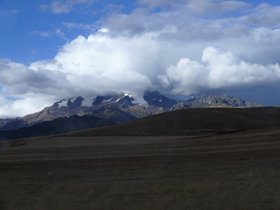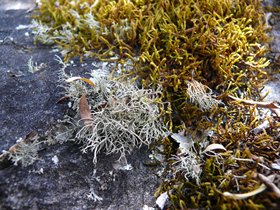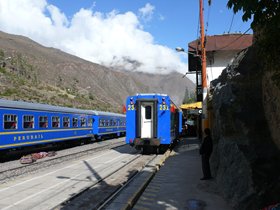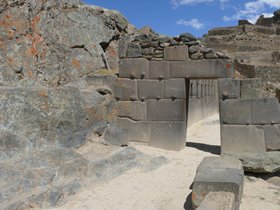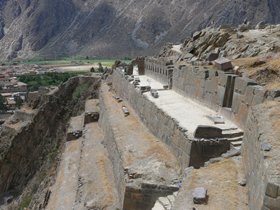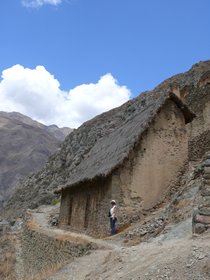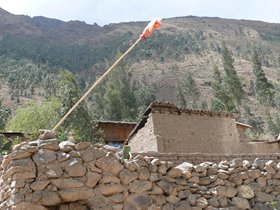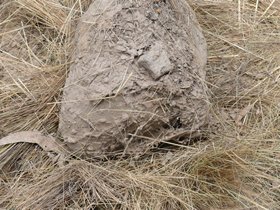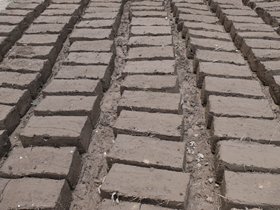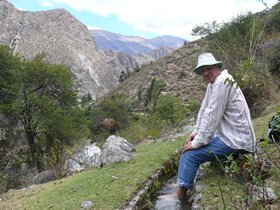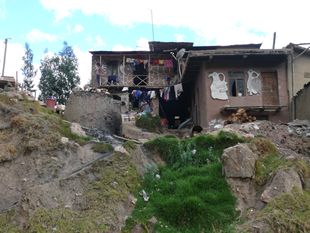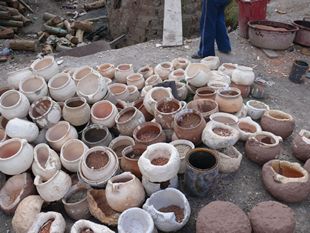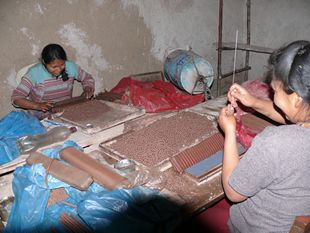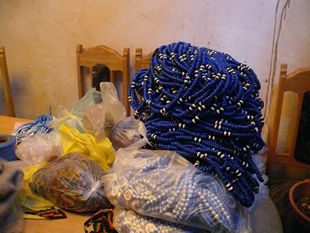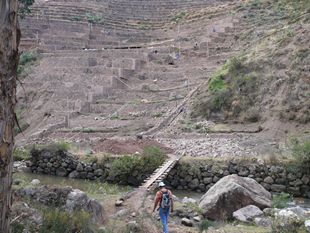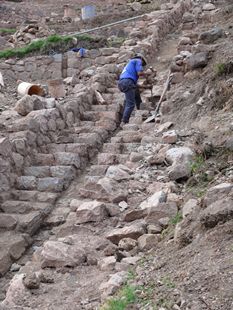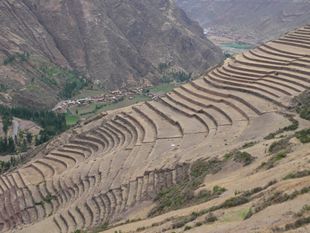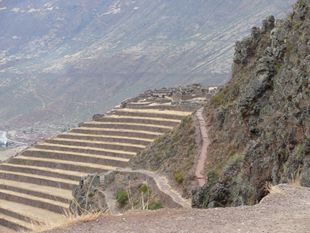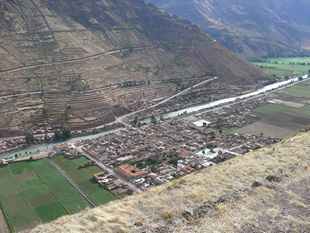THE SACRED VALLEY

|
The sacred Valley lies Northwest of Cusco. It follows the Urubamba River and has a fertile plain with an unusually mild climate for the high Andes. It formed the heartland of the Inca Empire leading to the Ceremonial Centre of Macchu Picchu. Eventually the River drains to the Amazon basin. It contains many important Inca sites and several picturesque towns. It is flanked by beautiful mountains and surrounded by snow-capped peaks. It is in this Valley that the Spaniards finally defeated the Incas after several bloody battles.
The journey to the Sacred Valley passes a high plain with rolling hills of red earth and yellow grass reminiscent of Tuscany. We stopped for a while in Chinchero and visited a fascinating Cottage Industry where they were spinning, dying and weaving wool to produce some exquisite products. The temptation to buy was great but Scorch is already groaning under the load.
A root vegetable is grated and Lichen used for dying naturally dyed wool The liquid frothed. It is then Used to wash the wool. The coloured balls of wool are sitting on the plants used to dye them
An intricate and time consuming work Boiling various concoctions Next dinner! We have not yet tried it. Standing guard at each end of the Valley are the towns of Pisac and Ollantaytambo, both with overwhelming Inca fortresses clinging to the sheer cliffs above. We stayed 3 days in each town. In Ollantaytambo we lodged in a delightful quirky hotel with its entrance on the train station platform. There were 24 trains a day heading back and forth to Macchu Picchu. An irresistible sight for Chris.
Hotel on the right of the platform The hotel back garden was another world and so peaceful Ollantaytambo was “A royal estate” and the town is unique in Peru as it is the only Inca settlement still inhabited in its original form.
Inca Temple clinging close to the mountain above Ollantaytambo Store house We went walking along the Valley for about 12km to another Inca Temple. No one else was around, it was magic.
Bath & washing time Red bag indicates home brew Adobe bricks are made of mud and dry grass mixed together Up in the hills Beer for sale shaped and left to dry before using for building
Pisac is now a bustling little market town where the produce from the fertile plain is traded. The Square by day is full of colourful stalls, which have become a great attraction for tourists. By night fall all the trestle tables and covers are dismantled and a peaceful square appears only to be re-instated as a market place at dawn.
Our Pisac Hotel. Wife Mexican, hence the colourful influence and style Prime view of the market from dining room Over the past 2 days we have been training for the Inca trail. We have taken soft and gentle walks averaging 10 km daily. Today we have had a splendid time. We trekked along the river, past villages and right up towards the top of a mountain towards the Amazon. It was magnificent scenery. Near the top we saw 2 army trucks with big mounted machine guns just above our tracks. We were in the middle of nowhere and felt a trifle unnerved. We decided to retrace our steps towards the villages. On the way down we spotted what we rightly though was a pottery. In our best Spanish we asked if we could see it. We were made so welcomed. It turned out to be a bead making factory.
The factory frontage Inside the kiln Beads are put in these pots and biscuit fired
Hard at work Some of the end result They were so friendly and happy! We descended towards the bottom of the Valley and approached Picas Inca Temple, which we had visited during our Sacred Valley Bus tour far to quickly. We decided to take our chances and went to speak to the workers restoring the Inca terraces. They gave us the thumbs up to enter the Temple through the back entrance.
Taking our chances Grand restoration Very steep climb to the Temple
Breathtaking views coming down the other side of the mountain Pisac from above We reached Pisac exhilarated and tired. We were rewarded with stunning vistas and the place to ourselves. |
